what is the best 3d model
Which 3D record designs are there? How would they look at? What would it be a good idea for you to utilize? We basically clarify the most well-known 3D record designs utilized today: STL, OBJ, FBX, COLLADA, 3DS, IGES; STEP, and VRML/X3D. creativgravityltd.
A 3D record design is utilized for putting away data about 3D models. You may have known about the most mainstream designs STL, OBJ, FBX, COLLADA and so forth They are generally utilized in 3D printing, computer games, films, design, the scholarly world, medication, designing, and studies of the planet. Every industry has its own mainstream 3D record designs for verifiable and pragmatic reasons. We will find out about 3D record organizations and bring a profound jump into the 8 most normal 3D document designs in this article.
You can likewise leap to the most well known 3D record organizes straightforwardly.
What is a 3D File Format?
A 3D model of a pigeon which contains shading data, light sources (notice the shadow) and activitys
The essential reason for a 3D document design is to store data about 3D models as plain content or twofold information. Specifically, they encode the 3D model's calculation, appearance, scene, and activitys.
The math of a model portrays its shape. By appearance, we mean tones, surfaces, material sort and so on The location of a 3D model incorporates the situation of light sources, cameras, and fringe objects. At long last, activity characterizes how a 3D model moves.
Nonetheless, not all 3D record designs store the entirety of this information. 3D record arrangements, for example, STL store just the 3D model's calculation and disregards any remaining credits. Then again, the configuration COLLADA stores everything.
STL and COLLADA are only two of the numerous 3D document designs that individuals use. We gauge that there are many 3D document designs at present being utilized in nature!
What number of 3D File Formats are there?
There are many 3D document designs
There are many 3D record designs
The issue with 3D record designs is that there are in a real sense many them. Each CAD programming maker, for example, AutoDesk and Blender has their own restrictive arrangement which is advanced for their product. So in the event that you use AutoCAD, you get a DWG document. In the event that you use Blender, you get a BLEND record.
Exclusive 3D File Formats Hinder Interoperability
Notwithstanding, the presence of so numerous exclusive document designs is a major issue. Assume you use AutoCAD (which is an AutoDesk item) and your companion utilizes Blender. Assume that you additionally need to impart your 3D model to your companion.
This isn't so natural. Your AutoCAD programming gives you a DWG record since it is the local AutoCAD design. Be that as it may, your companion's product, Blender, can just work with a BLEND record. This implies that you two can't deal with a similar 3D model.
Impartial 3D File Formats Solve this Problem
You regularly need to impart your 3D models to your customers, teammates and machines. Unbiased arrangements are ideal for this assignment.
You regularly need to impart your 3D models to your customers, partners and machines. Nonpartisan arrangements are ideal for this undertaking.
To take care of the issue of interoperability, unbiased or open source designs were concocted as middle configurations for changing over between two restrictive arrangements. Normally, these configurations have become enormously famous at this point.
Two well known instances of unbiased configurations are STL (with a .STL augmentation) and COLLADA (with a .DAE expansion). They are broadly used to share models across CAD programming. On the off chance that you need to share your 3D model, you convert the DWG document to a COLLADA record in a cycle considered sending out and give your companion the COLLADA record. Your companion takes the COLLADA record and imports it into Blender, where the COLLADA document is changed over to the local BLEND design. Thusly, you can keep on utilizing diverse programming and team up with others.
Restrictive versus nonpartisan is quite possibly the main divisions in the realm of 3D record designs. These days, most 3D demonstrating programming upholds perusing and composing well known impartial configurations. Likewise, most programming additionally support perusing and keeping in touch with a subset of exclusive configurations that are famous to such an extent that they can't be disregarded. We will talk about 8 such 3D document organizes in this article. Here is the rundown, where the 3D document designs are set apart with their sort.
3D document format Type
STL Neutral
OBJ ASCII variation is impartial, parallel variation is exclusive
FBX Proprietary
COLLADA Neutral
3DS Proprietary
IGES Neutral
STEP Neutral
VRML/X3D Neutral
Be that as it may, before we talk about each these configurations exhaustively, we will initially investigate the overall highlights of a 3D document design and examine the significant things you should remember while choosing an organization for your task.
General Features of 3D File Formats
As we examined before, the overall highlights of a 3D document design are:
Encoding math of the 3D model
Putting away appearance of the 3D model
Saving scene data
Encoding livelinesss
1. 3D File Formats: Encoding Geometry of the 3D Model
Each 3D model has an interesting math and the ability of encoding this calculation can be viewed as the most fundamental component of a 3D document design. Each 3D record design upholds this — else, they wouldn't be viewed as 3D document designs.
There are three unmistakable methods of encoding surface math, each with their comparing qualities and shortcomings. They are called surmised network, exact cross section and valuable strong calculation (CSG).
1.1 3D FILE FORMAT GEOMETRY: THE APPROXIMATE MESH
The fine trinaglar network is roughly encoding the surface math of this 3D model (source : i.materialize)
The fine three-sided network is around encoding the surface math of this 3D model (source: i.materialize)
In this encoding, the outside of a 3D model is first covered with a cross section of minuscule nonexistent polygons. Triangles are most normally utilized shape. The vertices of the covering triangles and the outward typical vector to the triangles are put away in the record. This addresses the surface calculation of the objective model.
The vertices and the typical to each three-sided aspect making up the cross section is put away in the record.
The vertices and the ordinary to each three-sided feature making up the cross section is put away in the record.
The way toward covering a surface with non-covering mathematical shapes is otherwise called "decoration". Thus these document designs are additionally called decorated configurations.
The triangles estimated the smooth calculation of the surface. Thus this is an inexact organization. The guess improves as the triangles get more modest. Nonetheless, the more modest the triangles, the bigger the quantity of triangles you need to tile the surface. This infers that the document needs to store a bigger number of vertices and typical vectors. Hence better approximations come at the expense of expanding document size.
The ideal circular surface on the left is approximated by decorations. The figure on the correct uses enormous triangles, bringing about a coarse model. The figure on the middle uses more modest triangles and accomplishes a smoother estimate (source: i.materialize)
The ideal circular surface on the left is approximated by decorations. The figure on the correct uses large triangles, bringing about a coarse model. The figure on the middle uses more modest triangles and accomplishes a smoother guess (source: i.materialize)
Inexact or decorated configurations are best utilized in circumstances where you don't require ultrafine goals of the 3D model. A genuine model is 3D printing. 3D printers can't print past a specific goal and consequently, this kind of 3D printing document designs are ideal for the work. Truth be told, the most famous 3D printing record design STL without a doubt has a place with this class of document designs.
1.2 3D FILE FORMAT GEOMETRY 2: THE PRECISE MESH
An illustration of NURBS patches encoding a bended surface calculation accurately. The red dabs are the control points of the NURBS.
An illustration of NURBS patches encoding a bended surface math unequivocally. The red specks are the control points of the NURBS.
There are, obviously, circumstances where a surmised encoding of the 3D model isn't sufficient and one necessities exact encoding of the surface math. For instance, while developing the body of a plane, specifically the round frame, a discrete polygonal lattice will not work. Albeit the model may take a gander at little goals, the level countenances and sharp corners will get clear very close.
Exact document designs get around this issue by utilizing Non-Uniform Rational B-Spline patches (or NURBS) rather than polygons. These parametric surfaces are comprised of few weighted control focuses and a bunch of boundaries called hitches. From hitches, a surface can be figured numerically by easily interjecting over the control focuses.
These surfaces look smooth in any scale and can recreate the surface math of a little piece of a 3D model in precise detail. Notwithstanding, there's consistently a compromise. While the exact lattice is accurate at any goal, they render increasingly slow be kept away from in applications where fast delivering is significant.
1.3 3D FILE FORMAT GEOMETRY 3: CONSTRUCTIVE SOLID GEOMETRY AKA CSG
At long last, there's one more kind of record design that doesn't include networks by any stretch of the imagination. In this arrangement, 3D shapes are worked by performing boolean tasks (expansion or deduction) of crude shapes like blocks, circles and so on For instance, to make a hand weight, one can basically take two circles and add an associating barrel shaped bar between. On the off chance that you have at any point utilized a CAD programming, you have seen this in real life, on the grounds that the majority of them utilize this rule.
Helpful strong calculation in real life during the development of a hand weight in Tinkercad
Useful strong math in real life during the development of a hand weight in Tinkercad
Useful strong math is extraordinary for planning 3D models and is very easy to use. Another enormous benefit is that every individual altering step (expansion, deduction, changes of crude shapes) is put away in this 3D document design. In this way, one can fix and re-try any progression whenever.
Unmistakably, in the event that you convert this configuration to a cross section based arrangement, you will lose the data about the individual altering steps.
2. 3D File Formats: Appearance
The second significant component of 3D document designs is the capacity to store appearance related data. In numerous applications, the presence of the 3D model is of prime significance. For instance, nobody needs to play Need For Speed with dull, boring vehicles. The vehicles should be bright and gleaming! The tone and sparkle of a vehicle are instances of appearance related properties. In straightforward terms, appearance depicts surface properties like material sort, surface, shading and so on This chooses how the model appears as though when it is delivered.
Data about appearance can be encoded in two unique manners.
2.1 3D FILE FORMAT APPEARANCE: TEXTURE MAPPING
Representation of how surface planning is utilized to encode shading and surface data of one side of a 3D square
Outline of how surface planning is utilized to encode shading and surface data of one side of a block
In surface planning, each point in the 3D model's surface (or the polygonal cross section) is planned to a 2-dimensional picture. The directions of the 2D picture have credits like tone and surface. When delivering the 3D model, each surface point is alloted an organize in this 2-dimensional picture. The vertices of the lattice are planned first. Different focuses are then appointed arranges by introducing between the directions of the vertices.
Most 3D record designs support surface planning. For this situation, the 2D picture containing surface data should be put away inside a similar document or independently in an alternate record.
2.2 3D FILE FORMAT APPEARANCE: FACE ATTRIBUTES
Another basic method of putting away surface data is to allot each face of the cross section a bunch of characteristics. Regular ascribes incorporate shading, surface and material sort.
Also, a surface can have a specular part demonstrating the shading and force of genuine mirror impressions of light sources and other close by surfaces. Surfaces can be straightforward or hazy. This is encoded by a transmissive segment portraying the shading and force of light that goes through the surface. Straightforward surfaces ordinarily contort light going through them. This mutilation is addressed by a list of refraction property, related with the model's material kind.
A straightforward 3D model of a seat. The straightforwardness is encoded as a property of every individual feature.
A straightforward 3D model of a seat. The straightforwardness is encoded as a property of every individual aspect.
3.3D File Formats: Scene data
The capacity of encoding data about the scene is another significant component of some 3D record designs. The scene portrays the design of the 3D model as far as cameras, light sources, and other close by 3D models.
The camera is characterized by four boundaries: amplification and chief point, area, the heading the camera is confronting and a bolt demonstrating which course is "up".
The encoding of the light source relies upon the idea of the light source. In the least complex instance of a point source, we basically need to store the source's area, its tone, and its power.
Some 3D record designs have the ability to encode data about lights, as demonstrated in this picture.
Some 3D document designs have the capacity to encode data about lights, as demonstrated in this picture.
The spatial connection between the 3D model and other close by models is additionally now and again put away. This is especially significant if the model is made of a few sections, which should be spread out with a specific goal in mind to cause up the situation.
It is significant that most 3D record designs frequently don't uphold scene data. This stems from commonsense reasons. With regards to format, one can generally guarantee that the pieces of the model are put in the right area prior to saving the model. For this situation, the document design doesn't have to unequivocally characterize the connections between the parts. The camera and light credits can likewise be disregarded since it is normal that the end clients will change the camera position at any rate as they explore around a scene.
4. 3D File Formats: Animation
Some 3D record designs have the ability to store movements of a 3D model. This is extremely valuable in game planning or film making where activitys are utilized intensely.
4.1 3D FILE FORMAT ANIMATION: SKELETAL ANIMATION
The most well known method of invigorating a 3D model is classified "skeletal activity". In skeletal movement, each model is related with a fundamental skeleton. The skeleton is made out of an order of virtual "bones". The development of bones higher in the chain of command (parent bones) influence the bones lower in the order (kid bones). This is like the human body, where a development of the shin bone influences the situation of the toes.
Comprehend that these bones are not genuine bones, yet simply numerical develops that assist an artist with characterizing developments in a model. The bones are ordinarily addressed by a 4×3 lattice where the initial three segments address revolution, scale, and shear of the bone. The last section is the interpretation comparative with the parent's reality space.
Notwithstanding the change, each bone is given a remarkable ID and is related with a subset of the cross section encoding the surface math. This subset moves alongside the virtual bone.
Bones are associated by "joints". Joints present limitations in the potential changes related with a bone, in this way confining how a bone can move comparable to its parent. This is again like the human body – the elbow may just turn around a predefined pivot while the swiveling appendage between the thigh and pelvis permit revolution around all hub.
Here is a cool and short video clarifying how bones and joints can be utilized to make essential activitys in Cinema4D.
4.2 3D FILE FORMAT ANIMATION: TECHNIQUES OF ANIMATION
There are a wide range of methods of putting away activitys of skeletal constructions. The main methods are forward kinematics, converse kinematics, and keyframes. You can peruse substantially more about activity procedures and encodings in this Bachelor postulation by Marcus Lundgren.
Which 3D File Format Should you use for Exporting and Sharing your Model?
We are currently in acceptable situation to respond to this inquiry.
Each 3D displaying programming permits sending out into various 3D document designs. Nonetheless, which one you decide for your application relies a ton upon which highlights you need for your work and the product you will utilize. Since we are currently acquainted with the various highlights of 3D record designs, we are prepared to investigate the various contemplations that goes behind the decision of a specific document design. There are three significant contemplations.
1. 3D File Formats: Which Features do you Need?
3D record designs are utilized in a wide range of areas and businesses and each has their own particular necessities and prerequisites. Contingent upon which industry you are in, you may need various arrangements of highlights in your optimal 3D document design. To clarify what we mean, we should talk about three significant businesses utilizing 3D document designs.
1.1 3D FILE FORMATS FOR 3D PRINTING
The 3D printing industry utilizes inexact document designs. Capacity for putting away appearance is needed at times.
The 3D printing industry utilizes estimated document designs. Capacity for putting away appearance is needed at times.
In 3D printing, high exactness isn't a prerequisite on the grounds that the current printers can't print past a specific goal. Subsequently, document designs utilizing the inexact encoding of the surface math are ideal for the work. STL is such a record design and is the most well known 3D printing arrangement to date.
STL, be that as it may, can't store data identified with appearance. So on the off chance that you need to print a multicolor model, you can't utilize STL any longer since it can't store tone or material related data. There are other record arrangements, for example, OBJ or AMF which can store appearance related data. In this manner these arrangements (OBJ being the most famous) are the most ideal decision for multicolor models.
1.2 3D FILE FORMATS FOR GRAPHICS BASED APPLICATIONS (GAMES AND MOVIES)
Games require quick delivering, support for rich tone and surfaces, and movement.
Games require quick delivering, support for rich tone and surfaces, and liveliness.
In illustrations based applications, the prerequisites are not quite the same as 3D printing. Since we are far beyond the high contrast time, 3D models utilized in games and motion pictures require rich tones and finishing. Games and motion pictures additionally need to help liveliness. What's more, all illustrations based applications as a rule request high delivering speeds. Hence, the best arrangements for this sort of occupation would be something that utilizations estimated calculation to accomplish quick delivering, can encode appearance and backing movement. The FBX and COLLADA designs check all these containers and henceforth are ideal for illustrations applications.
1.3 3D FILE FORMATS FOR HIGH-PRECISION ENGINEERING
3D displaying in the space of air transportation designing requires exact encoding of surface calculation
3D demonstrating in the space of air transportation designing requires exact encoding of surface math
The name says everything. In the order of high accuracy designing, for example, advanced plane design, the 3D models should be smooth and exact at any scale. Along these lines, designs utilizing exact calculation, for example, IGES or STEP will be the best fit for this errand.
Since the highlights of a 3D record design is a significant thought in recognizing the ideal configuration, we have given a table of highlights upheld by the best 8 3D document designs in the informative supplement to this article. You can investigate it when you need to settle on a choice.
2. Which Software Pipeline would you say you are Going to Use?
The following significant thought is the product pipeline that you will use for your errand. Not all product support bringing in and trading of all 3D document designs. You ought to pick a record design that is upheld by your product of decision.
For your reference, we have incorporated a table of document designs upheld by the ordinarily utilized 3D demonstrating programming and motors in the second addendum to the article. This is another asset you can counsel when settling on a document design.
Portion of the overall industry of the most well known 3D displaying programming
3. Which Software does your colleague use?
The document design that you pick needs to find a way into your pipeline, yet additionally into your teammate's pipeline. On the off chance that you know your colleagues, ask them what they utilize and talk about which record designs fits well into both your and your partner's work process.
On the off chance that you don't have the foggiest idea about your teammates, it's ideal to avoid any and all risks. Simply pick the most famous arrangement that fulfills the past necessities. It's ideal if the configuration is unbiased and not restrictive.
Top 8 3D File Formats exhaustively
Up until this point, we have talked about 3D document designs at a theoretical and significant level. We have examined the various highlights that 3D record designs carry out and how you can pick the ideal 3D document design dependent on this information. Presently, how about we investigate the 8 most significant 3D record organizations and discover which of these highlights they support, how well known they are and which ventures use them the most.
On the off chance that you are searching for data about a specific 3D record design, you can avoid the others and hop right to that 3D document design.
STL
OBJ
FBX
COLLADA
3DS
IGES
STEP
VRML and X3D
3D Files Format #1: STL
STL (STereoLithography) is quite possibly the main impartial 3D document designs in the area of 3D printing, fast prototyping, and PC supported assembling. It is local to the stereolithography CAD programming made by 3D Systems. The relating record expansion is .STL.
STL is one of the most seasoned 3D document designs and was made in 1987 by Chuck Hull, who is presently the CTO at 3D Systems. He likewise developed the world's first stereolithographic 3D printer. The STL document design was made along these lines as a straightforward method of moving data about 3D CAD models to this 3D printer.
Fundamental CHARACTERISTICS
STL encodes the surface calculation of a 3D model around utilizing a three-sided network. Since it was one of the main 3D record configurations to abuse decorations as a method of encoding surface math, it has a few backronyms, for example, "Standard Tessellation Language" and "Standard Triangle Language".
STL overlooks appearance, scene, and livelinesss. It is one of the least complex and most slender 3D document designs accessible today. The STL design determines both ASCII and twofold portrayals. Double records are more normal since they are more minimized.
Fame AND FUTURE PROSPECTS
Since the time its innovation, the STL document design has been quickly embraced by the fast prototyping, 3D printing, and PC supported assembling enterprises. It is as yet the most broadly utilized record design in 3D printing.
The rule of STL over 3D printing may end soon, notwithstanding. As of late, 3D printing innovation has progressed quickly. The loyalty of printing measures are currently arriving at micron level precision. Since STL is an estimated design, it needs exceptionally little three-sided aspects to arrive at this goal, creating enormous and clumsy documents all the while. Also, numerous 3D printers currently permit imprinting in full tone, an innovation that is relied upon to turn out to be more inescapable sooner rather than later. STL can't encode shading data and is pointless for this reason. Therefore, the rule of STL over the 3D printing world may not keep going long and organizations like OBJ, 3MF, or AMF may supplant it.
WHICH INDUSTRIES USE IT?
3D printing, fast prototyping, PC helped producing. To find out about the STL document design, you can see our definite article on STL.
3D Files Format #2: OBJ
The OBJ record design is another nonpartisan heavyweight in the field of 3D printing. It is additionally generally utilized in 3D illustrations. It was first evolved by Wavefront Technologies for its Advanced Visualization movement bundle. The 3D record design has the augmentation .OBJ.
Principle CHARACTERISTICS
The OBJ record design upholds both estimated and exact encoding of surface math. When utilizing the surmised encoding, it doesn't confine the surface cross section to three-sided aspects. On the off chance that the client needs, he can utilize polygons like quadrilaterals. When utilizing exact encoding, it utilizes smooth bends and surfaces like NURBS.
The OBJ arrangement can encode shading and surface data. This data is put away in a different record with the augmentation .MTL (Material Template Library). It doesn't uphold any sort of liveliness. The arrangement determines both ASCII and twofold encodings, yet just the ASCII encoding is open source.
Ubiquity AND FUTURE PROSPECTS
The OBJ record design, by goodness of being nonpartisan or open, is quite possibly the most mainstream exchange designs for 3D illustrations. It is additionally acquiring foothold in the 3D printing industry as the business moves towards full shading printing.
WHICH INDUSTRIES USE IT?
3D designs, 3D printing
For more data on the OBJ document design, you can see its Wikipedia page.
3D Files Format #3: FBX
FBX is a restrictive document design which is generally utilized in the entertainment world and computer games. It was initially evolved by Kaydara however was purchased via Autodesk in 2006. Since the time the securing, AutoDesk has utilized FBX as an exchange design for its own portfolio which incorporates AutoCAD, Fusion 360, Maya, 3DS Max and other programming bundles.
Fundamental CHARACTERISTICS
The FBX record design upholds calculation and appearance related properties like tone and surfaces. It likewise upholds skeletal movements and transforms. Both double and ASCII records are upheld.
Notoriety AND FUTURE PROSPECTS
FBX is perhaps the most famous decisions for movement. Furthermore, it is likewise utilized as a trade design which works with high devotion trade between 3DS Max, Maya, MotionBuilder, Mudbox and other restrictive programming.
WHICH INDUSTRIES USE IT?
Computer game industry and entertainment world. To find out about the FBX record design, you can see its Wikipedia page.
3D Files Format #4: COLLADA
Collada is a nonpartisan record design utilized vigorously in the computer game and entertainment world. It is overseen by the non-benefit innovation consortium, the Khronos Group. The record expansion for the COLLADA design is .DAE.
Fundamental CHARACTERISTICS
The COLLADA design upholds calculation, appearance related properties like tone, material, surfaces, and activity. What's more, it is one of the uncommon organizations supporting kinematics and physical science. The COLLADA design stores information utilizing the XML markup language.
Notoriety AND FUTURE PROSPECTS
The first goal behind the COLLADA design was to turn into a norm among 3D document designs. For sure, in 2013, it was received by ISO as a freely accessible particular, ISO/PAS 17506. Because of this set of experiences, loads of 3D demonstrating programming support the COLLADA design.
In any case, the agreement is that the COLLADA design hasn't stayed aware of the occasions. The COLLADA design was once utilized intensely as an exchange design for Autodesk Max/Maya in the entertainment world, yet the business has now moved more towards OBJ, FBX, and Alembic.
WHICH INDUSTRIES USE IT?
Entertainment world, computer game industry. For more data about the COLLADA document design, see the authority docs from the Khronos Group.
3D Files Format #5: 3DS
3DS is an exclusive document design utilized in design, designing, training, and assembling. It is local to the old Autodesk 3D Studio DOS, a mainstream demonstrating programming which was subsequently supplanted by its replacement 3D Studio MAX in 1996. Created during the 90s, it is one of the most seasoned 3D record designs. It has gotten one of the accepted business guidelines for putting away 3D models or for trading between two other exclusive organizations.
Principle CHARACTERISTICS
The 3DS document design holds just the most fundamental data about math, appearance, scene, and liveliness. It utilizes a three-sided lattice to encode the surface calculation roughly, the absolute number of triangles being restricted to 65536. It stores appearance related properties like tone, surface, material, transmissivity and so forth Scene data such camera position, lights can likewise be put away, however the configuration doesn't uphold directional light sources.
The 3DS design indicates a paired encoding and stores data in lumps. This permits parsers to skip pieces they don't perceive and takes into account augmentations to the arrangement.
Notoriety AND FUTURE PROSPECTS
Being one of the most established record designs, 3DS has gotten a norm for putting away 3D models and exchanging between other 3D document designs. For all intents and purposes all 3D programming bundles support it. In any case, since this organization holds just the most fundamental data about the 3D model, it can't be utilized in circumstances where one would not like to lose data. For this situation, this organization needs to enhanced by the MAX design (presently supplanted by the PRJ design), which contains additional data explicit to Autodesk 3DS Max, to permit a scene to be totally saved/stacked.
WHICH INDUSTRIES USE IT?
Design, designing, training, and assembling. To find out about the 3DS document design, you can look at the Wikipedia page.
D Files Format #6: IGES
IGES (articulated eye-jess) is a nonpartisan old folk utilized essentially in the guard business and in the field of designing. It was created during the seventies by the US Air Force.
Back then, the Air Force used to burn through a great deal of time in the drawn-out interaction of sharing and changing over information between exclusive frameworks utilized by its providers. The circumstance was particularly awful with bigger ventures like plane carrying warships or rocket conveyance frameworks including many providers. The IGES design was created by the Air Force in association with Boeing and others to fill in as an exchange design that can be shared across all CAD frameworks. Since the 80s, the US Department of Defense has necessitated that all safeguard and weapons contracts use IGES as the standard document design. The document expansion relating to the IGES design is .IGS or .IGES.
Principle CHARACTERISTICS
The IGES design is an ASCII encoding that is very adaptable with regards to addressing surface calculation. It can utilize circuit charts, wireframes, exact freestyle surfaces or CSG for putting away math related data. The arrangement can likewise store tones however doesn't uphold material properties like surfaces, material sort and so forth Activity is likewise not upheld.
Fame AND FUTURE PROSPECTS
IGES has delighted in boundless prominence since the time it was created during the 70s. It has been received as a public norm in numerous nations like UK and Australia. Basically all CAD programming upholds it.
The IGES record design is not, at this point created, but then it is still broadly used to move information between CAD, CAM, and CAE programming programs. It is a mainstream decision for 3D displaying, formation of specialized drawings, and item plan. It has the standing of being a decent decision for novices in 3D; proficient 3D specialists presently favor its replacement STEP.
WHICH INDUSTRIES USE IT?
Safeguard, designing
3D Files Format #7: STEP
STEP (The Standard for the Exchange for Product Data) or ISO 10303 was created as a replacement of the IGES record design. It is broadly utilized in designing related fields like car and flying designing, building development and so forth The relating document design is .STP.
The authoritatively expressed target of creating STEP was to make an instrument that is fit for depicting item information for the duration of the existence pattern of an item, autonomous from a specific framework. Nonetheless, because of the intricacy and size of the first norm, it has been subsequently separated into more modest, particular details in four significant deliveries.
Principle CHARACTERISTICS
The STEP design upholds every one of the highlights upheld by the IGES design. Moreover, it can likewise encode geography, mathematical resiliences, material properties like surfaces, material sorts, and other complex item information.
Prevalence AND FUTURE PROSPECTS
STEP, similar to IGES, is a famous organization for exchange of information between CAD, CAM and CAE programming programs. For similarity, it is as yet fitting to utilize IGES as it is the more normal organization and bound to work with the accepting party's product. Nonetheless, for use situations where one requirements to move data identified with the model's appearance, resistances of the parts and so on, STEP is the correct organization.
WHICH INDUSTRIES USE IT?
Designing for example auto, aviation, building development and so forth
For more data, read this near conversation of the IGES and STEP designs.
3D Files Format #8: VRML and X3D
The last 3D document design we will examine is VRML and X3D. VRML (articulated vermal and having the record expansion .WRL) represents Virtual Reality Modeling Language. It is a 3D record design that was created for the World Wide Web. It has been prevailing by X3D.
The term VRML was first instituted in a paper by Dave Raggett named "Stretching out WWW to help Platform Independent Virtual Reality" submitted to the principal First World Wide Web gathering in 1994. It required three additional years till a develop variant of the organization VRML97 was made and turned into an ISO standard.
VRML97 was utilized in some close to home landing pages and 3D talking locales, for example, "CyberTown". Nonetheless, the arrangement neglected to acquire any huge selection. Moreover, VRML's capacities stayed stale while realtime 3D illustrations improved quick. In the end, the VRML consortium changed its name to the Web3D Consortium and began fostering the replacement of the VRML design X3D, which was delivered in 2001.
Principle attributes
X3D is a XML based 3D record design. It upholds all highlights of the VRML design alongside certain increases.
The VRML design utilizes a polygonal lattice to encode surface calculation and can store appearance related data like tone, surface, straightforwardness and so forth The X3D design adds NURBS encoding of the surface calculation, the ability of putting away scene related data and backing for movement.
Prominence AND FUTURE PROSPECTS
The objective of X3D is to turn into the standard 3D document design for the web. Specifically, X3D applets can run inside a program and show content in 3D utilizing the OpenGL 3D illustrations innovation. X3D was additionally intended to incorporate consistently with HTML5 pages similar as the SVG design for pictures. Notwithstanding, till date, the organization has not gotten wide acknowledgment.
WHICH INDUSTRIES USE IT?
Web and the web. For more data about the X3D design, read this guide from the Web3D Consortium.
End
We have adapted a lot about 3D record arranges in this article. We talked about how and why there are many arrangements and how they can be characterized into two general classifications: restrictive and nonpartisan. Then, we investigated the main highlights of a 3D record design and gave tips on how you can pick the ideal organization for your application. We wrapped up with a conversation of the 8 most significant 3D document designs, zeroing in on their highlights, prominence and use cases. The index has an abundance of data about the similarity of these 3D document designs with the most mainstream 3D demonstrating programming and motors. It additionally has a table for similar investigation of the capabilities of these 3D record designs.
We trust you delighted in this article. Offer it with your companions who are keen on the universe of 3D demonstrating, game turn of events, embellishments, designing, engineering and 3D printing. In the event that you have any inquiry, assessment or criticism, if it's not too much trouble, share it with us in the remark area.
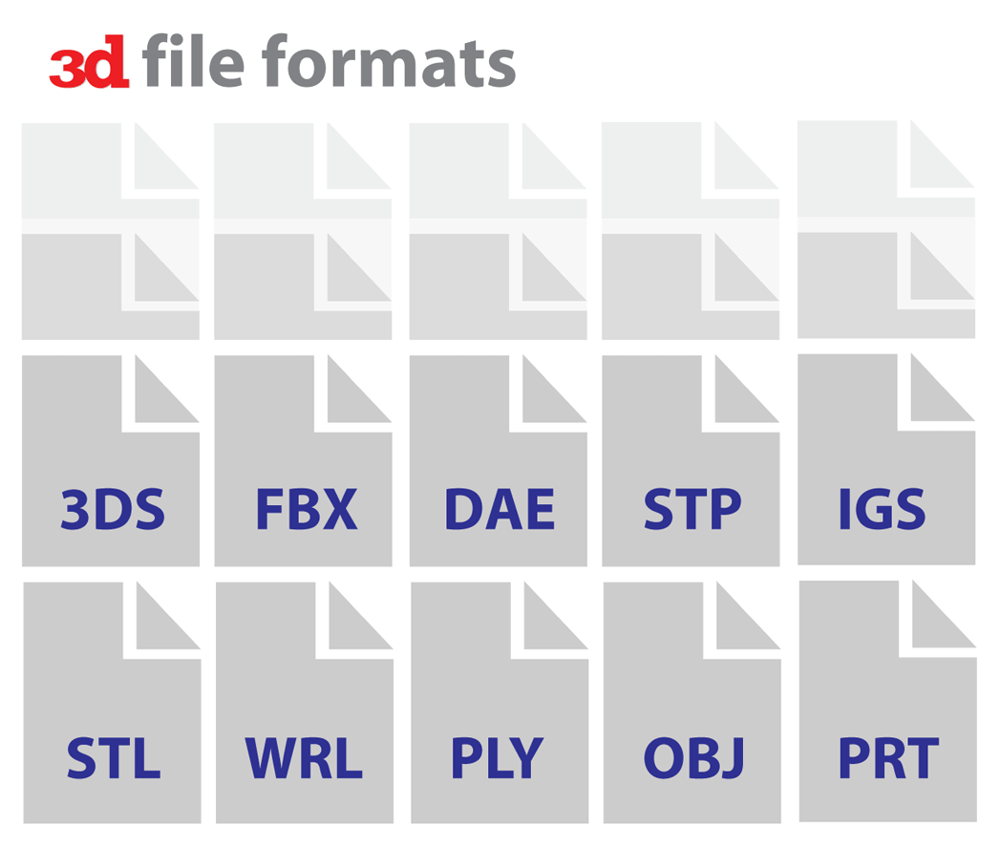

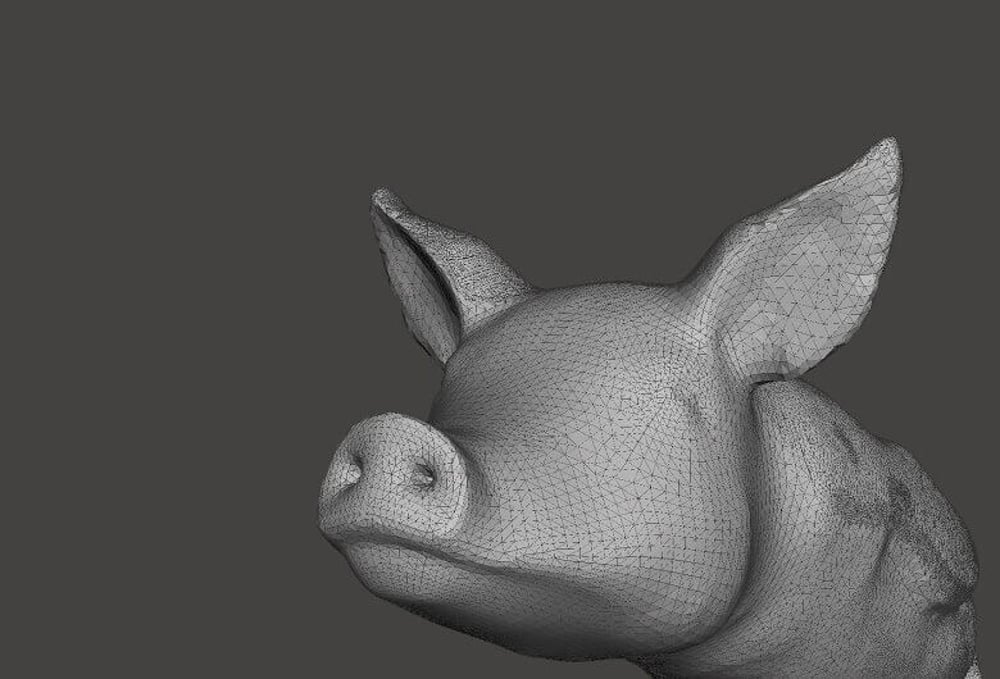
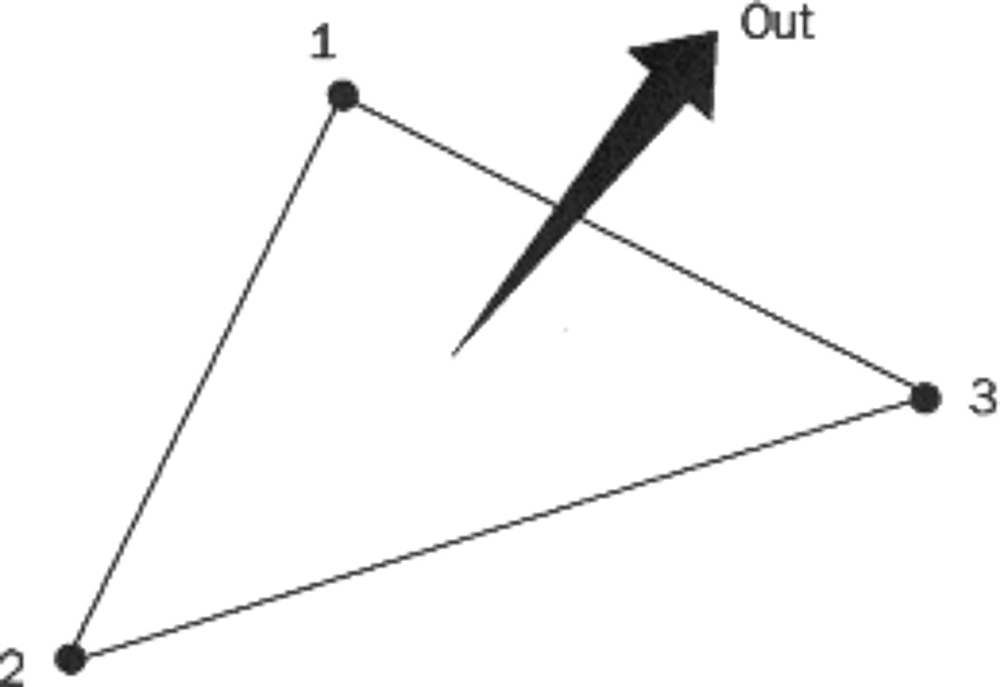
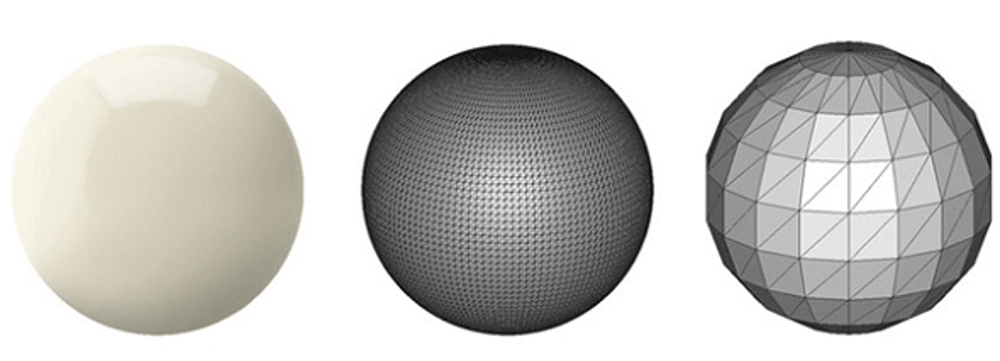
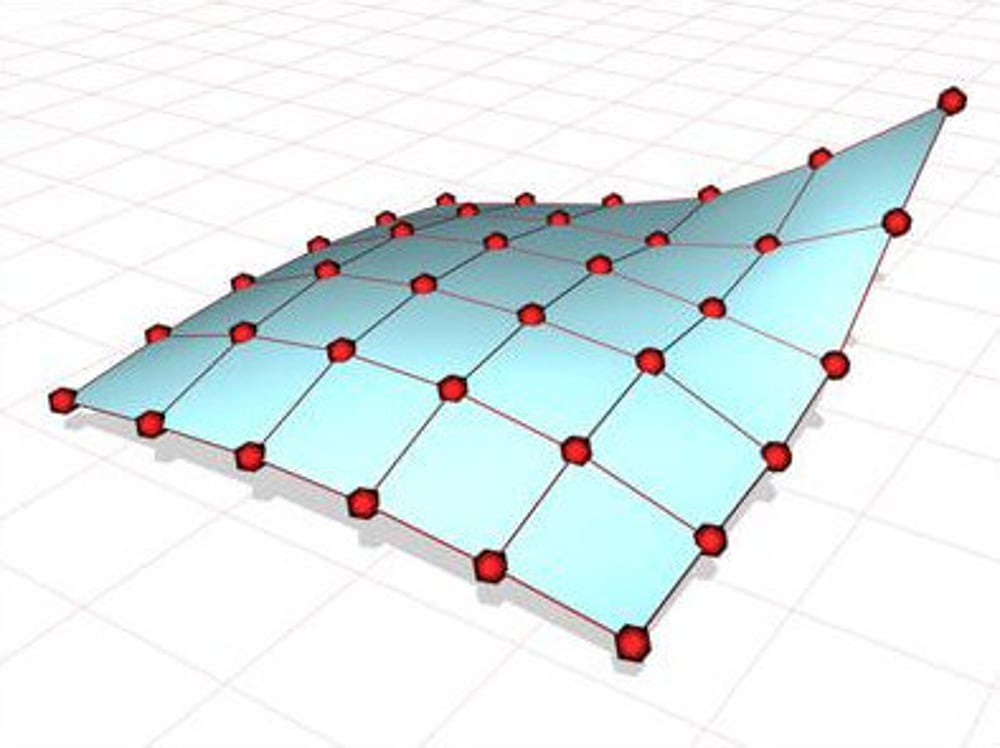

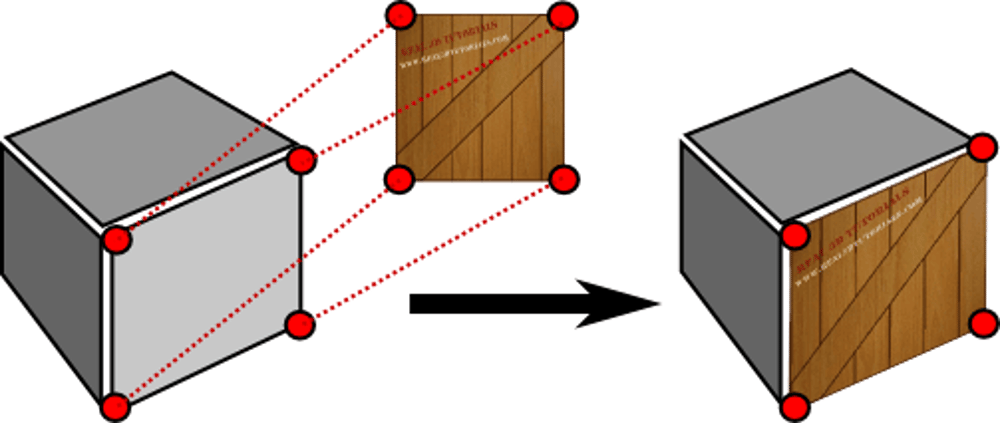
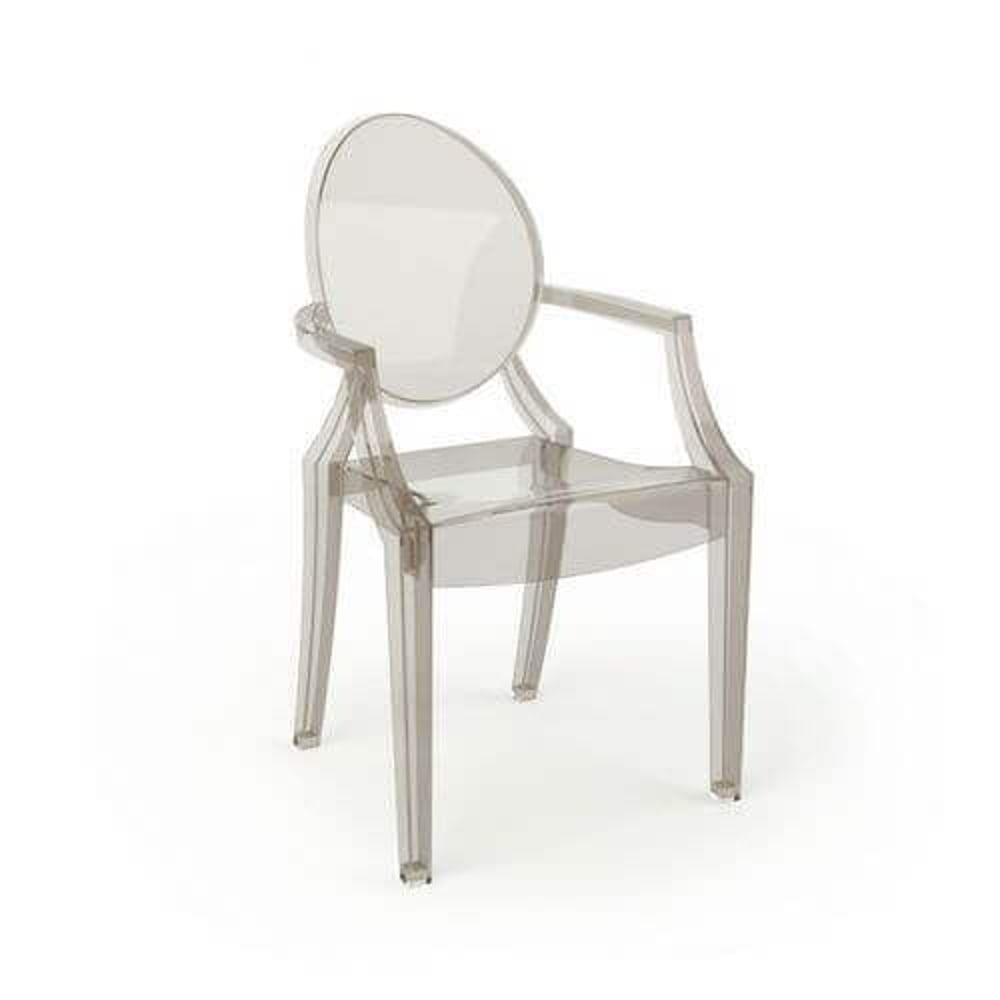

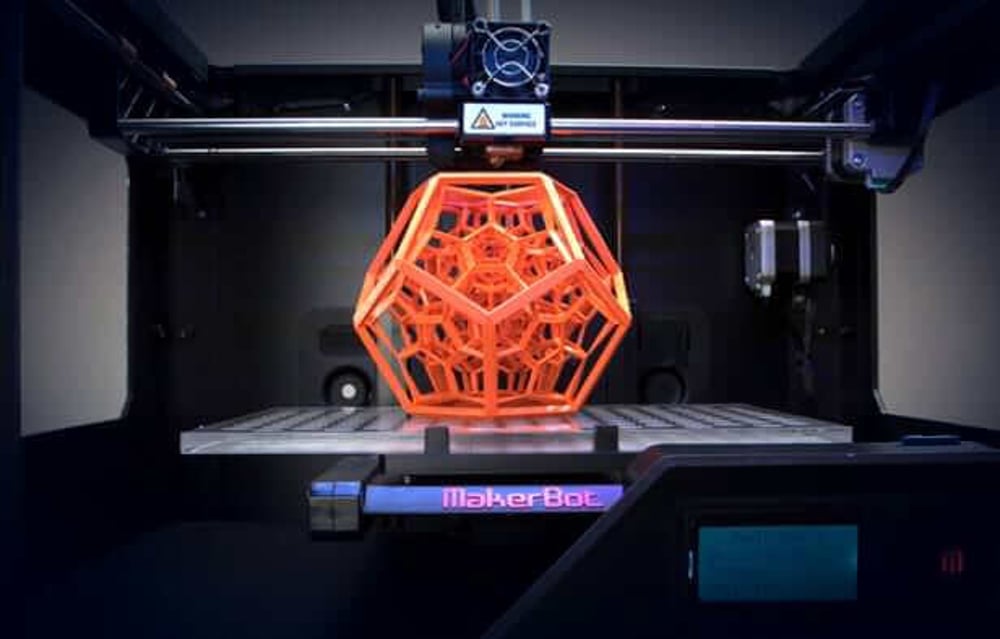


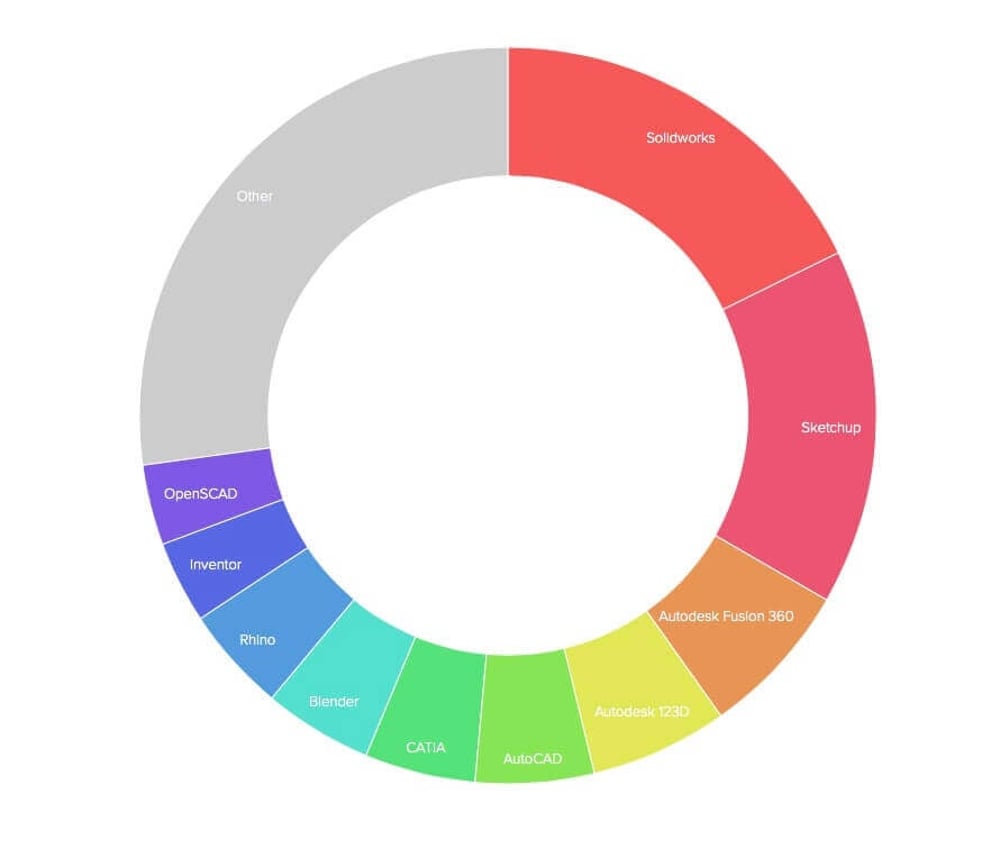



Comments
Post a Comment